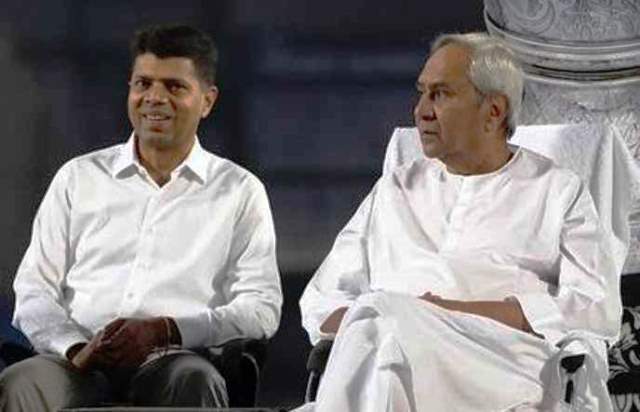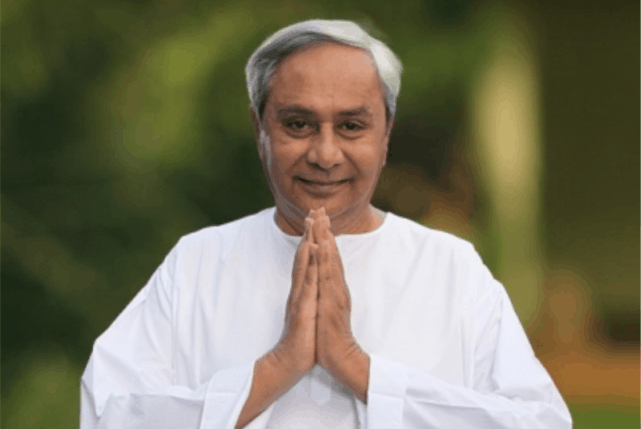Who could have thought in one’s widest imagination till the people of Odisha went to the polling booths in four phases to choose members of the Lok Sabha and state Assembly that Biju Janata Dal (BJD) would fare so miserably! Not only was the regional party, which unlike the Trinamool Congress in the neighbouring West Bengal never entertained national ambition, heading the local government for as many as 24 years without encountering any credible opposition from within and without the Assembly, but Naveen Patnaik who remained the chief minister all the while kept the government and the party tightly under his leash.
This became possible as there was not a single occasion that Patnaik could be accused of financial corruption or distribution of favours. An uncommon virtue among politicians in the Indian subcontinent.
That BJD would fare so poorly at the hustings to the extent of conceding of the 21 parliamentary seats 20 to BJP and one to Congress came as a highly pleasant surprise for the party that promotes Hindutva unabashedly. (This stands in sharp contrast to BJD winning all the Lok Sabha seats from the state in 2014 when most of the country was swept by Modi wave. The BJD tally was down to 12 in the 2019 elections. Besides other factors, BJD became a victim of anti-incumbency.)
As if drawing a blank in the Lok Sabha was not enough, BJD suffered the ignominy of handing over the reins of state administration to BJP, which won 78 of the 147 Assembly seats relegating BJD to 51 seats compared with 112 seats it held in the last house. Patnaik, who for very long enjoyed the affection and respect of the people of Odisha, himself fared badly in Assembly elections. Not sure about poll outcome, Patnaik this time contested from two constituencies – Hinjli and Kantabanji. Much to his and BJD’s distress he got defeated at Kantabanji by 16,334 votes and scraped through Hinjli with a margin of 4,636. The elections were a mea culpa for Patnaik whose successes and wide acceptability in earlier years in spite of his embarrassing difficulty to do business in local Odia language made him impervious to the ground falling out from underneath his feet.
Youngest of the three children of Biju and Gyan Patnaik, Odisha’s tallest political family, Naveen was born a year before Independence in Cuttack but was raised mostly outside the state. Naveen, an alumnus of Doon School and St. Stephen’s College, had Indian-American write Gita Mehta who passed away last year as his sibling. Now 77 and not in good health restricting his movement and interaction with people (all a major handicap for a politician), Patnaik, an accidental politician, was a sophisticate before he contested and comfortably won the Lok Sabha seat at Aska – his legendary father’s constituency – in 1997.
Patnaik thereby proved to be someone who had rubbed shoulders with people like Jacquelline Kennedy, Mick Jager and the Beatles and pursued interest in art and culture but then because of circumstances dived into politics. His inheriting “father’s responsibilities and not his privileges” and deciding to go through the rough trade of politics surprised his family members and countless admirers. Knowing him, they likely never thought Patnaik would rule Odisha for this length of time.
ALSO READ: Naveen Patnaik – The Accidental Chief Minister
His failing health apart, Patnaik became so very sure of popular support for him and the party that he founded in December 1997 after breaking away from Janata Dal and remains its president and sole arbiter that he did not realise the consequences of many of his decisions. The worst thing that could happen to a politician in a democracy is when he shuts himself from the people and thereby denies himself the benefit of first-hand feedback. Patnaik went a few steps further. Ministers were finding it increasingly difficult to meet their chief minister. They were given to understand that discussing state matters with V Karthikeyan Pandian, an IAS officer who quit the service to join BJD and confidante of Patnaik, was as good as confiding in chief minister.
Nobody will contest the fact that Pandian did an excellent job in all the postings, including private secretary to the chief minister that came his way. As Pandian resigned from the service in October 2023 to join the BJD, he was made chairman of Transformational Initiatives with cabinet minister rank. Bhubaneswar was then abuzz with speculation that non-Odia Pandian hailing from Tamil Nadu was chosen as the potential political successor to Patnaik and he was to become the principal strategist of BJD election campaign.
The proximity of a Tamilian bureaucrat – his IAS officer spouse Sujata is, however, an Odia – to Patnaik and his becoming arbiter of state affairs gave a handle to opposition leaders at the national level to mount their election campaign on the plank that BJD was out to destroy ‘Odia Ashmita’ (pride in English.) The bonhomie seen in parliament between the union government and BJD during 2019-24 didn’t stop Narendra Modi and Amit Shah from accusing Patnaik of handing over the reins to an outsider. Rahul Gandhi also joined the chorus.
In his defence Pandian said: “I am an Indian by birth and Odia by breath. The mother tongue of my children is Odia and Odisha is my karmabhoomi (the land where one works).” His loyalty to the state and its welfare is above reproach. But from Union education minister Dharmendra Pradhan to many BJD politicians, everyone thought Pandian stood accused of wielding extra-constitutional authority and spiriting away the powers of ministers, elected by the people.
Outstation reporters descending on Odisha for election coverage did mandatorily ask common citizens about what they feel about Patnaik delegating more and more authority to Pandian. Their answers can be summed up like this: “Naveen Babu is our revered Biju Patnaik’s son. There is no erosion in our affection for him. He not keeping well doesn’t mean that a Tamil will be his successor. This is not acceptable.” Calcutta has traditionally hosted a large Odia community and some expressed their anguish to this scribe over the ascendance of a ‘non-Odia’ in their state.” Unfortunately, so removed was Patnaik from what was happening on the ground that he failed to realise that the Pandian controversy was to become his Armageddon.
Besides the damage that Pandian factor did to ‘Odia Ashmita’ and in turn to BJD electoral prospects, Patnaik left BJD sympathisers confused by lending unconditional support to the Modi administration in parliament in passing the Citizenship Amendment Act, revocation of Article 370, Delhi-NCT Bill. In the election of the President, BJD voted for the NDA candidate Droupadi Murmu. Patnaik worked on the theme that he would never be part of Opposition attack of the union government as it would work in the interest of Odisha.
Mamata Banerjee and a few others made attempts to rope in Patnaik in the united opposition INDIA, but without any success. Patnaik holding olive branch to BJP throughout last Lok Sabha and also making attempts to have an electoral alliance with the ruling dispensation at the centre, which, however, fizzled out did not ensure that Modi-Shah would not go for his jugular during the election campaign. There is also no denying that BJP owes much to Rashtriya Swayamsevak Sangh (RSS), which continues to expand its infrastructure in Odisha, through educational institutions notably, for its stunning electoral success. Now after the electoral drubbing, Patnaik has realised that as a regional party, the only way to revive its fortunes would be to play the role of a true opposition party in Rajya Sabha where BJD has nine members. Humouring Modi and Shah proved to be the undoing of BJD. Can much be salvaged now?
For more details visit us: https://lokmarg.com/






